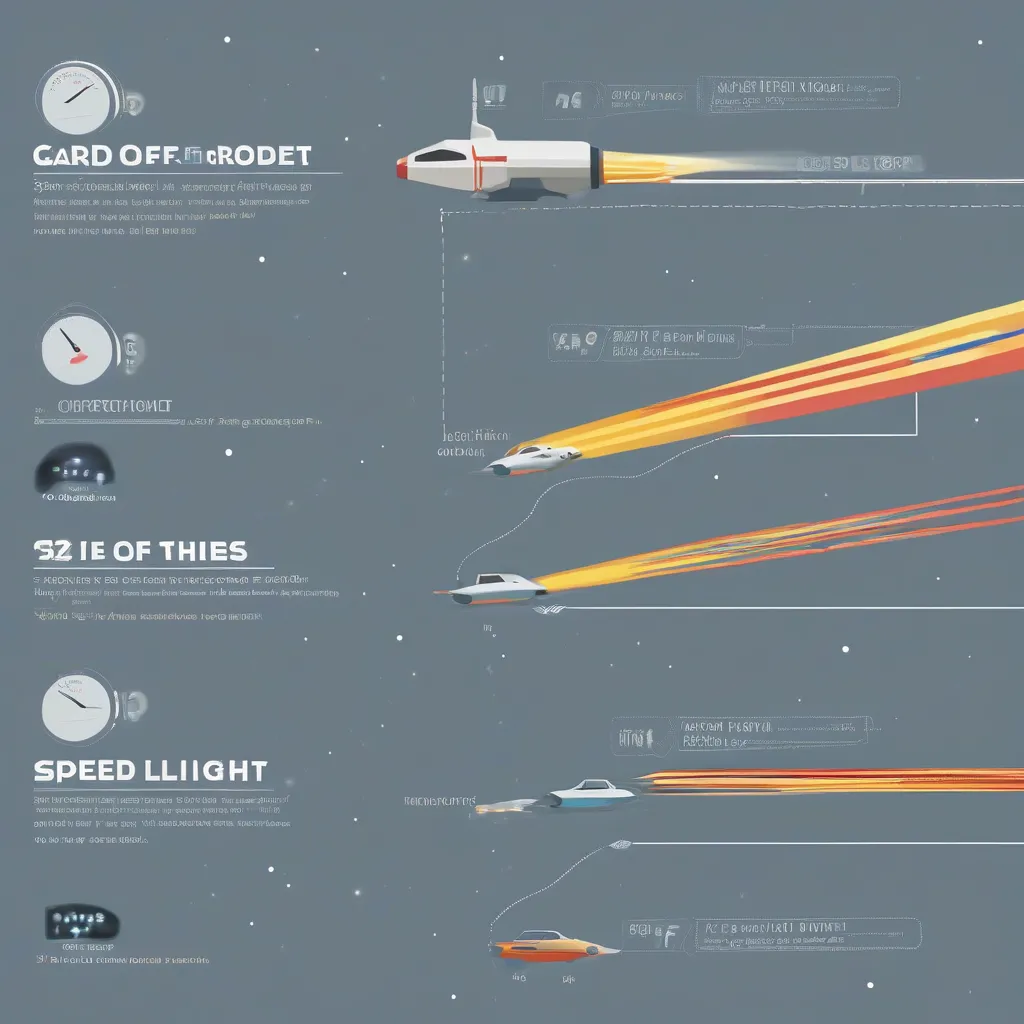Have you ever gazed up at the night sky from a bustling city like Tokyo, with its bright lights momentarily dimmed, and wondered about the twinkling stars light-years away? Or perhaps you’ve stood on the desolate plains of the Atacama Desert, known for its stargazing opportunities, and pondered the vastness of the cosmos? One question that often pops up in our minds is, just how fast does light from these distant objects travel to reach us?
The Speed of Light: A Cosmic Constant
Light, in the vacuum of space, travels at a staggering speed of approximately 299,792,458 meters per second, often rounded up to an easier-to-remember 300,000 kilometers per second. This speed, denoted by the letter ‘c,’ is a fundamental constant in physics and plays a crucial role in our understanding of the universe.
Imagine taking a trip around the Earth at the speed of light. You could circle the globe about 7.5 times in just one second! That’s faster than any plane, train, or even the fastest rocket we can currently imagine.
Why is the speed of light so important?
This universal speed limit isn’t just about how fast light travels; it’s fundamental to how we perceive time and distance in the vast expanse of space.
- Looking back in time: When we observe distant galaxies, we’re seeing them as they were millions or even billions of years ago. The light from those galaxies has taken that long to reach us, providing a glimpse into the universe’s history.
- Measuring cosmic distances: Astronomers use the speed of light to measure the incredible distances between stars and galaxies. The distance light travels in a year is called a light-year, a unit commonly used in astronomy.
A Journey Through the Cosmos
Let’s embark on a hypothetical journey at the speed of light, starting from a familiar landmark – the Eiffel Tower in Paris.
- To the Moon: A mere 1.3 seconds after leaving Earth, we’d already be walking on the lunar surface.
- To the Sun: A bit further out, it would take about 8 minutes to reach our star, the Sun, feeling its immense heat.
- Beyond the Solar System: In just over 4 years, we’d reach Proxima Centauri, the closest star system to our own.
- Across the Milky Way: To cross our entire galaxy, the Milky Way, would take a whopping 100,000 years, showcasing the vastness of even our own galactic neighborhood.
As you can see, even at the fastest speed possible, exploring the universe is a journey of cosmic proportions.
 Speed of Light Comparison
Speed of Light Comparison
Frequently Asked Questions about the Speed of Light
- Can anything travel faster than light? According to Einstein’s theory of relativity, nothing can travel faster than light in a vacuum.
- Why is the speed of light constant? This is one of the fundamental principles of physics. It’s like asking why gravity exists – it’s a fundamental property of the universe.
- How do we know the speed of light? Scientists have been measuring the speed of light for centuries, with increasingly accurate methods.
Travelcar.edu.vn: Your Guide to Earthly and Cosmic Adventures
While we may not be able to travel at the speed of light just yet, Travelcar.edu.vn can help you explore the wonders of our own planet. Whether you’re dreaming of a romantic getaway to Paris, gazing at the stars from the Atacama Desert, or simply want to learn more about the world around us, we’ve got you covered.
 Eiffel Tower at Night
Eiffel Tower at Night
Conclusion
The speed of light is more than just a number; it’s a fundamental aspect of the universe that shapes our understanding of time, distance, and the vastness of the cosmos. While we may never personally reach such incredible speeds, contemplating the sheer scale of the universe can be a humbling and awe-inspiring experience.
What are your thoughts on the speed of light and the vastness of space? Share your thoughts in the comments below! And don’t forget to check out our other articles on TRAVELCAR.edu.vn for more travel inspiration and insights.
